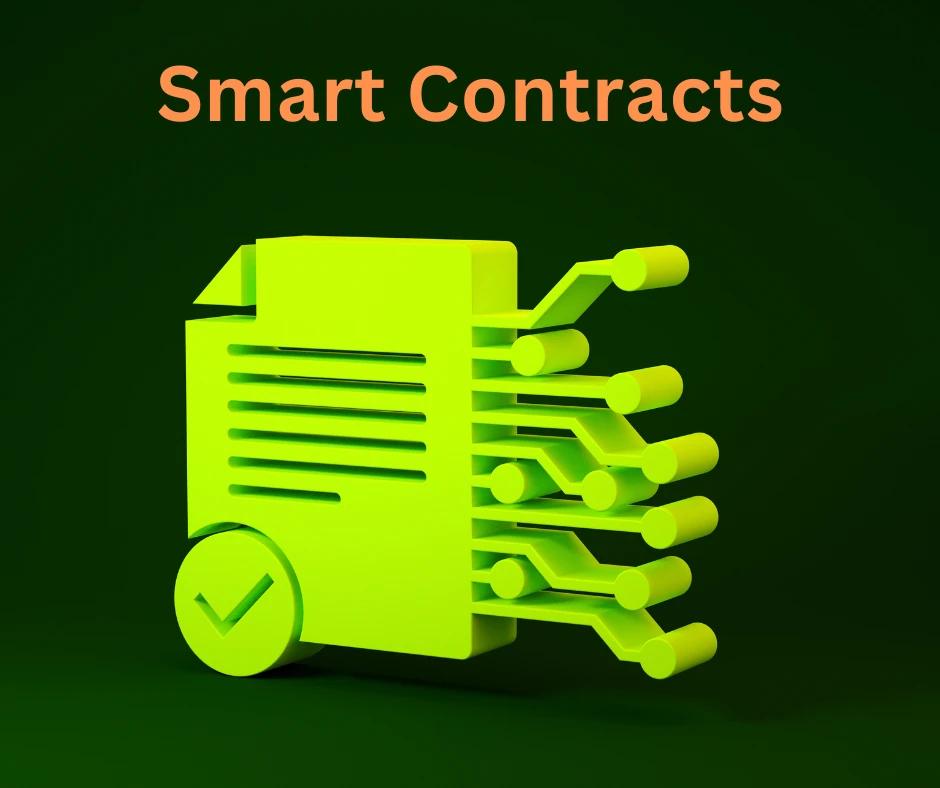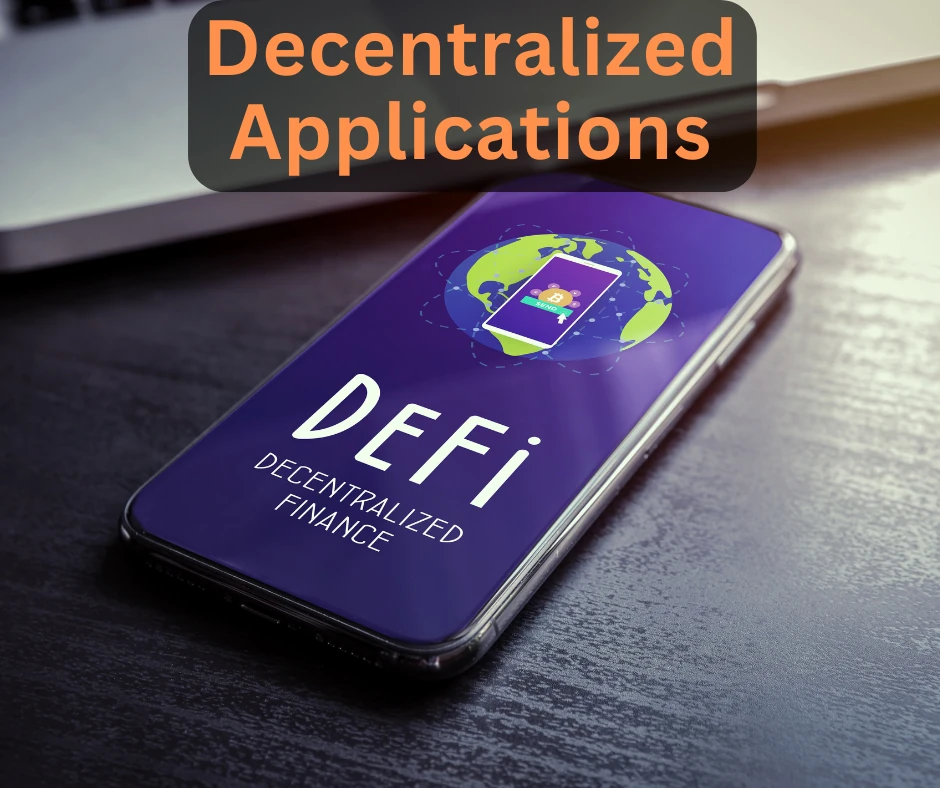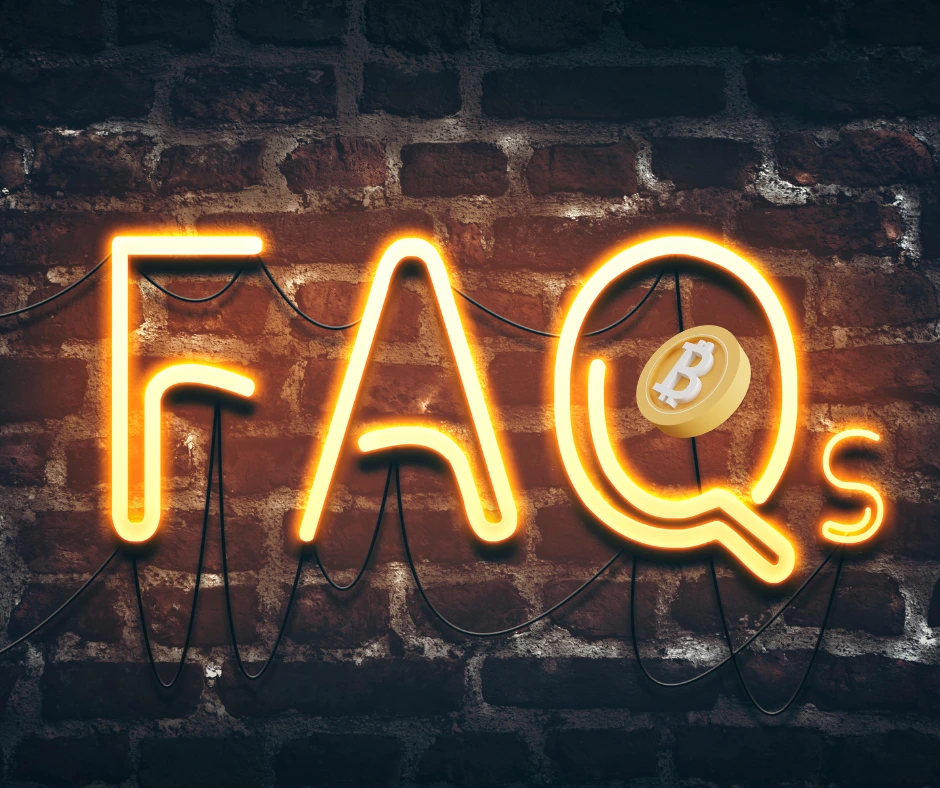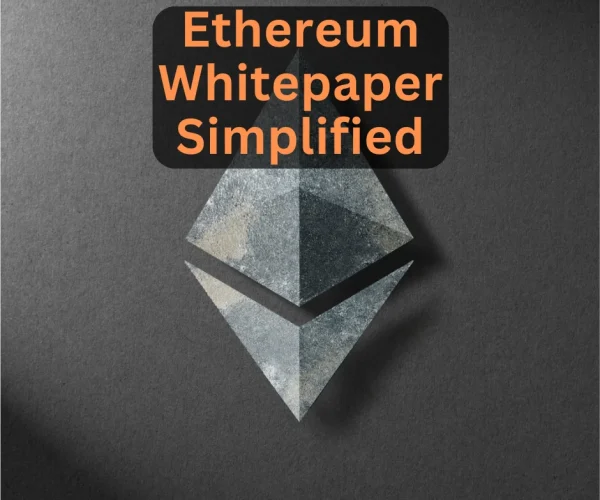If you’re new to the world of cryptocurrencies, then the Ethereum whitepaper may seem like a daunting read. But fear not! We’ve got you covered with our simplified version that breaks down all the complex jargon and technical terms into easy-to-understand language.
As one of the most popular blockchain platforms today, Ethereum has revolutionized how we think about decentralized applications and smart contracts. And understanding its whitepaper is crucial for anyone who wants to delve deeper into this exciting technology.
So get ready to dive into the world of Ethereum – let’s dive into our article Ethereum Whitepaper Simplified together!
Introduction
Welcome to our blog post on the Ethereum whitepaper! In this article, we’ll be simplifying the contents of the Ethereum whitepaper and breaking down its key components in an easy-to-understand format. Let’s dive in!
Key Takeaways
- Ethereum Whitepaper introduced a flexible, secure platform for smart contracts and decentralized applications.
- The Ethereum Virtual Machine allows for the execution of dApps in a decentralized network, promoting transparency and security.
- Ethereum’s revolutionary technology has paved the way for advancements such as NFTs and a more accessible blockchain ecosystem.
What is and how does Ethereum work
A brief overview of the Ethereum whitepaper Simplified
The Ethereum whitepaper was published in 2014 by Vitalik Buterin, the founder of Ethereum. It is an introductory paper that explains the concept of blockchain and how it can be used to create smart contracts and decentralized applications. The Ethereum blockchain is a decentralized peer-to-peer network that enables users to validate transactions and create new blocks.
Compared to Bitcoin, which uses a proof-of-work consensus mechanism, Ethereum initially used the same protocol but has since moved towards a proof-of-stake mechanism called Ethereum 2.0. This shift improves computational scalability and reduces transaction fees.
One of the key features of Ethereum is its built-in programming language, Solidity, which allows developers to write smart contracts for various use cases such as voting systems, supply chain management, or even creating non-fungible tokens (NFTs). These smart contracts can be executed automatically when certain conditions are met.
Ether (ETH) is the native cryptocurrency used in the Ethereum ecosystem as a transaction fee for using its services. The value of ETH has risen significantly over time due to its usage in various DeFi protocols and NFT marketplaces.
Overall, understanding the contents of the Ethereum whitepaper is essential for anyone who wants to dive into building decentralized applications or investing in cryptocurrencies beyond just Bitcoin.
Important Entities
- Ethereum Network: The decentralized platform Ethereum operates comprises nodes that validate and propagate transactions.
- Ethereum Whitepaper: The foundational document outlining the concept and technical specifications of the Ethereum platform.
- Ethereum Blockchain: The distributed ledger on which data and transactions are recorded within the Ethereum network.
- Ethereum Classic: A separate blockchain created after a hard fork of the Ethereum network in 2016, maintaining the original version of the network.
- White Paper: A technical document describing a project or technology’s technical and functional aspects.
- Ethereum Community: The collection of users, developers, and stakeholders contributing to various aspects of the Ethereum ecosystem.
- Social Contract: The implicit agreement among the community members to adhere to certain rules, norms, and expectations.
- Ethereum Foundation: The non-profit entity tasked with supporting the development, promotion, and maintenance of the Ethereum platform.
- Blockchain-Based Software: A software solution that utilizes cryptographic and decentralized mechanisms to provide security, transparency, and resistance to censorship.
Ethereum Consensus Mechanism
Proof of Work
In Ethereum’s early days, it relied on the Proof of Work (PoW) consensus mechanism to achieve agreement among the nodes in the network. Under PoW, miners in the blockchain ecosystem compete to solve complex mathematical puzzles, allowing them to validate and verify transactions. Once you successfully solve the puzzle, you can add a new block to the blockchain as a miner. The first miner to solve the puzzle is rewarded with newly created Ether. This process helps maintain the cryptocurrency’s security and integrity.
However, Proof of Work has some limitations. It’s energy-intensive and requires expensive hardware, making it less accessible for individuals and smaller operations. This has led the Ethereum community to explore alternative consensus mechanisms, such as Proof of Stake, to address these issues.
Proof of Stake
The Proof of Stake (PoS) consensus mechanism aims to address the limitations of PoW. In PoS, validators in the network are chosen to create new blocks and validate transactions based on their staked cryptocurrency holdings. The more cryptocurrency you have staked, the higher the chances are of being selected as a validator.
To participate, you will need to lock your Ethereum tokens as collateral. This incentivizes validators to act honestly, as any malicious behavior may result in losing their staked tokens.
Ethereum has transitioned to a PoS-based consensus mechanism to improve the network’s scalability, security, and energy efficiency.
The Concept of Smart Contracts

Definition of Smart Contracts
Smart contracts are self-executing contracts with the terms of the agreement between two parties directly written into lines of code, which run on the Ethereum platform. These contracts are decentralized and automatically execute actions when predefined conditions are met, removing the need for intermediaries and increasing trust between parties. This concept, introduced in the Ethereum Whitepaper, allows for the creation of decentralized applications (dApps) that handle digital assets, store value, and perform various tasks on the Ethereum protocol.
Why is it Revolutionary
The introduction of smart contracts has revolutionized how transactions occur on the blockchain. You can achieve faster, more secure, and transparent transactions by eliminating third-party intermediaries and their fees. Smart contracts enable trustless agreements by relying on the code and the decentralized nature of the Ethereum platform rather than on intermediaries for enforcement. This reduces the opportunities for fraud, corruption, or manipulation, ultimately strengthening the trust between parties.
Applications of Smart Contracts
Smart contracts have numerous applications across various industries:
- Cryptocurrencies and tokens: Smart contracts enable the creation of tokens or digital assets on the Ethereum platform. These tokens represent anything from real-world assets to utility tokens used in dApps.
- Decentralized Finance (DeFi): The blockchain’s decentralized nature allows for the development of DeFi applications, including lending, borrowing, and decentralized exchanges. Smart contracts power these applications and automatically execute the necessary tasks.
- Digital Asset Management: With smart contracts, you can protect and manage your digital assets, such as intellectual property, digital art, and digital certificates. This enables creators and asset owners greater control, ownership, and security.
- Supply Chain Management: Smart contracts enable transparent and real-time tracking of goods in a supply chain, ensuring all parties can access accurate information. This improvement in efficiency and data reliability has the potential to save time and improve trust in the supply chain industry.
These examples are just a few of the countless possibilities smart contracts bring to the Ethereum platform. By leveraging the power of smart contracts, you can participate in this revolutionary ecosystem and witness the continuous innovation driven by the Ethereum protocol.
Ethereum Virtual Machine (EVM)
The Ethereum Virtual Machine (EVM) is a powerful component of the Ethereum ecosystem that enables the execution of smart contracts. Thanks to its Turing-complete capabilities, it is a decentralized computational machine that can handle any complex algorithm. The EVM interprets and executes the instructions of a smart contract while also managing the state transitions within the Ethereum protocol.
In simpler terms, the EVM allows you to create and deploy smart contracts on the Ethereum blockchain. It runs the contract code and updates the Ethereum state accordingly.
The EVM is designed to be efficient and secure, ensuring that smart contracts are executed accurately and safely within the ecosystem.
Decentralized Applications (DApps) on Ethereum

Explanation of DApps
Decentralized applications (DApps) are built on top of the Ethereum network, which run on a peer-to-peer model without central authority. DApps function using smart contracts and a frontend user interface, combining the power of blockchain technology with accessible user experiences. Smart contracts on Ethereum provide the application logic and are transparent, allowing you and others to see and use them like open APIs. This removes intermediaries and brings control back to the users themselves.
Examples of DApps
Numerous DApps are built on the Ethereum platform, catering to various industries and use cases, including finance, governance, gaming, and more. Some popular DApps include:
- Decentralized Finance (DeFi) applications such as Uniswap, which offer decentralized exchanges for swapping tokens, and Aave, a platform for lending and borrowing digital assets.
- NFT platforms like Rarible and OpenSea, enable users to create, buy, and sell unique non-fungible tokens (NFTs).
- CryptoKitties – a game that allows users to breed and trade digital cats as collectibles.
- Decentralized Autonomous Organizations (DAOs), such as MolochDAO and Aragon, allow users to collaborate on projects and make decisions through decentralized governance.
Explanation of Ether and Gas
Ether (ETH) is the native cryptocurrency of the Ethereum blockchain. It can be used to pay for transactions and computational services on the network. When interacting with the Ethereum ecosystem, you’ll need to use ETH as a transaction fee to incentivize miners to validate your transactions and execute smart contracts.
Transactions on the Ethereum network can require varying amounts of computational resources, measured in gas. This is where ETH comes into play, as it is used to pay for the gas consumed during these transactions.
For example, if you send ETH to someone or interact with a smart contract, the transaction cost is determined in gas, denominated in Gwei. Gwei is a smaller unit of ETH. Essentially, 1 Gwei is equal to 0.000000001 ETH.
The Future of Ethereum

Discussion on Ethereum 2.0
Ethereum 2.0 is an essential upgrade to improve the blockchain’s performance and scalability. As you know, with the increasing popularity of Ethereum, the current network has faced limitations in handling high transaction volumes. By transitioning to Ethereum 2.0, network congestion problems could be significantly alleviated, providing a more seamless experience for users. Ethereum 2.0 introduces new features like the Proof of Stake (PoS) consensus mechanism and shard chains to address scalability issues and ensure a more energy-efficient network.
Potential Future Developments as Hinted in the Whitepaper
The Ethereum Whitepaper laid the foundation for the platform and its initial capabilities and hinted at potential future developments. Some possible advancements that could arise include:
- Smart contract upgrades: Enhancements to the smart contract system could provide increased security and flexibility for users, allowing them to create complex and innovative applications on the platform.
- Interoperability with other blockchains: Ethereum might collaborate with other platforms as blockchain technology advances to enable seamless transactions and create new solutions for decentralized applications.
- Layer 2 scaling solutions: To address congestion and throughput limitations, Ethereum will likely adopt layer two scaling solutions like rollups, which can significantly increase transaction speed without compromising security.
- Decentralized autonomous organizations (DAOs): Combining smart contracts to form DAOs is a crucial aspect of Ethereum’s vision. They could enable more effective decision-making and resource allocation within organizations, reshaping how businesses are governed.
The Difference between Ethereum and Bitcoin
One key difference between Ethereum and Bitcoin is their consensus mechanisms. While Bitcoin follows a Proof of Work (PoW) model, where miners compete to validate transactions and mint new tokens, Ethereum is transitioning to a Proof of Stake (PoS) model, called Ethereum 2.0. In PoS, validators are chosen based on the amount of cryptocurrency they have staked, which reduces energy consumption significantly compared to PoW.
Both cryptocurrencies have wallets and exchanges that allow you to buy, sell, and store them safely. However, Ethereum’s versatility also enables the creation of tokens, which serve as digital assets representing different values or utilities within a specific ecosystem. This feature has led to a surge in Initial Coin Offerings (ICOs) over the years, giving birth to numerous other cryptocurrencies and projects.
In summary, while Bitcoin is primarily a digital asset that aims to replace traditional money, Ethereum offers a platform for a broader range of decentralized applications and use cases. Understanding the core differences between Ethereum and Bitcoin allows you to make more informed decisions when investing or participating in the ever-evolving crypto landscape.
Conclusion
Recap of the Key Points from the Ethereum Whitepaper
In the Ethereum whitepaper, Vitalik Buterin introduces Ethereum as an open software platform powered by blockchain technology designed for developers to build decentralized applications quickly. It presents a shift from just being a digital currency like Bitcoin to being a platform for creating a more comprehensive range of decentralized applications. To solidify your understanding, remember these key points:
- Ethereum’s vision: An open software platform for developers to build decentralized applications, empowering various use cases beyond digital currency.
- Smart contracts: The foundation for decentralized applications, allowing logic and transaction handling to be automated and self-executing.
- Ether: Ethereum’s native cryptocurrency, used to incentivize and provide resources for executing smart contracts.
- Decentralized governance: Utilizing consensus mechanisms to secure and validate network transactions without a centralized authority.

Frequently Asked Questions
Q: Differences in ETH White and Yellow Papers
A: While the Ethereum Whitepaper serves as a high-level introduction to the platform, the Ethereum Yellow Paper is a more technical, formal specification of the Ethereum protocol. If you want to dive deeper into the technical details, consider reading the Yellow Paper. However, the Whitepaper is your best starting point if you’re new to Ethereum and prefer a more general understanding.
Q: What is the history of Ethereum?
A: Ethereum is a blockchain-based software platform created by Vitalik Buterin in 2015. It was created as a platform for building decentralized applications (dApps) on top of a blockchain network, taking the concept of Bitcoin to the next level.
Q: How is Ethereum different from Bitcoin?
A: Ethereum operates on a blockchain network like Bitcoin but has more advanced capabilities. While Bitcoin is primarily a digital currency, Ethereum is a software platform that enables developers to build decentralized applications, smart contracts, and utility tokens using the blockchain.
Q: What are smart contracts and decentralized applications?
A: A smart contract is a computer program that automatically executes the terms of a contract when certain conditions are met. Decentralized applications run on a blockchain network rather than a central server, providing greater security, transparency, and functionality.
Q: How do I buy Ethereum?
A: You can buy Ethereum from cryptocurrency exchanges, such as Coinbase, Binance, or Kraken. You must create an account, provide identification information, and link a payment method to purchase Ethereum.
Q: Can I make money with Ethereum?
A: Yes, you can make money with Ethereum by buying and holding the cryptocurrency as an investment, trading it for other cryptocurrencies or fiat money, or using it to participate in decentralized finance (DeFi) platforms or non-fungible token (NFT) marketplaces.
Q: What are next-generation smart contracts and decentralized applications platforms?
A: Next-generation smart contract and decentralized application platforms are platforms beyond Ethereum, that aim to address the scalability, security, and usability issues of first-generation blockchain networks like Ethereum.
Q: What is the Ethereum Whitepaper?
A: The Ethereum Whitepaper is a document written by Vitalik Buterin that introduced the concept of Ethereum and its design principles. It was published in 2013 and outlined a vision for a generalized blockchain-based computing system to power the next generation of decentralized applications and smart contracts.
Q: What is Ethereum 2.0?
A: Ethereum 2.0 is the next major upgrade to the Ethereum blockchain network, aimed at improving its scalability, security, and sustainability. It will introduce a new proof-of-stake consensus mechanism, shard chains, and other technical improvements to increase the network’s capacity and reduce energy consumption.
Q: What are tokens in Ethereum?
A: Tokens in Ethereum are digital assets representing a specific utility or value within a decentralized application or smart contract. They can facilitate peer-to-peer transactions, provide access to services or content, or enable community governance.
Q: What is the scalability issue in Ethereum?
A: The scalability issue in Ethereum refers to the network’s limited capacity to process many transactions at high speed. This is due to the network’s consensus mechanism, proof-of-work, which requires a lot of computational power to validate each transaction and create new blocks.
Q: What are NFTs?
A: NFTs, or Non-Fungible Tokens, are unique digital assets stored on a blockchain. They represent ownership or proof of authenticity for various items, from digital art to virtual real estate.
